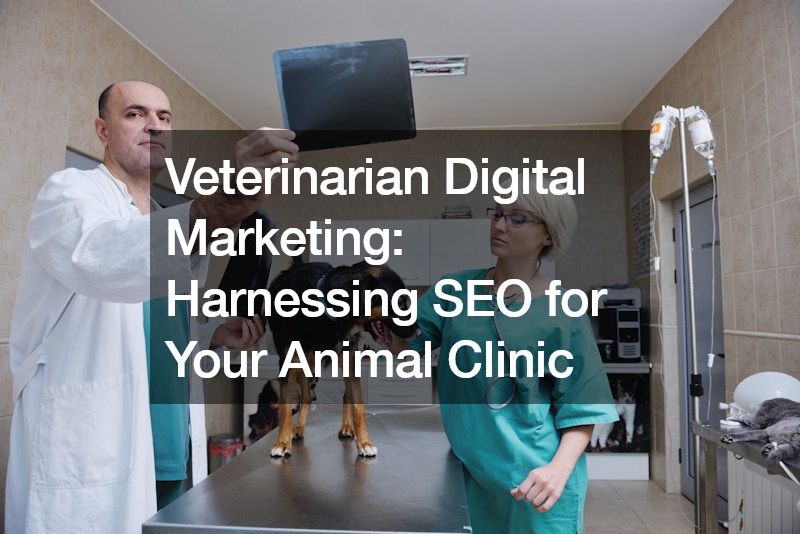
For small niche businesses like Hispanic food distributors, SEO, also known as “Search Engine Optimization” is key to attracting new business and growing your company over time. It may seem like an optional skill to learn, but ultimately, if you can create and follow a search engine optimization checklist for yourself, you’ll be able to improve your SEO practices without too much fuss or stress. Like any new skill, learning how to optimize your content and business materials online for search engines will take time and experimentation.
Beyond the phase that mostly entails trial and error, you’ll want to do your research to learn what SEO practices might apply to your industry and which ones are okay to avoid as you’re developing your website content. If you’re having a hard time figuring out what you can do to improve your SEO or where to start, our guide below is the perfect resource for you. With a search engine optimization checklist in tow, you’ll be golden.
Know When It’s Time to Call in a Professional
When you have a small niche business, it can be tempting to want to do everything on your own. Small business owners may not have the luxury of large profit margins or huge teams of staff to delegate different tasks. What’s more, small niche business owners can have a unique sense of pride and ownership for their small businesses.
If you own a small niche business, you might be more tempted to have your hands in every aspect of your company than the CEO of a large corporation would. Since the success of your business may feed your family and keep a roof over your head, you may have all the more personal investment to make sure that every detail is up to your high standards. Of course, you might also take deep pleasure in seeing every little aspect of your small business unfold before your very eyes. This can make it hard to step away from a specific area of your small business that falls outside of your scope of expertise.
Although it can be hard to know when to call in the professionals and when to keep pushing forward even when you find yourself out of your depth in SEO, simply consulting with a professional can put you on the right path. While online resources like our search engine optimization checklist can give you some perspective and general knowledge about tailoring your website to pull clients to your small niche business, they aren’t exhaustive. If you follow all of the steps below and still find that your sales are down or your web traffic runs dry, it may be time to consult with someone who does SEO for businesses for a living. Even if this costs you money in the short run, it’s a move that could make you money in the long run as your sales and customer base grow.

Have Confidence in Your Ability to Learn New Skills
On the flip side of our previous suggestion, this wouldn’t be a good search engine optimization checklist if we didn’t encourage you to believe in your abilities after you go through all of the steps on our checklist. Everyone has to start somewhere, so don’t let your novice status in SEO get in the way of you picking up this new skill. It not only takes time to learn what SEO is, how SEO works, and what good SEO looks like for your business, but it can also be a constant process of taking in new information and researching SEO. As search engine algorithms change and the best practices become modified to follow those shifts, you’ll always have something new to learn about this topic. Even if you’ve been studying and practicing solid search engine optimization to the point where you could write your search engine optimization checklist for new business owners, you can never have too much information or knowledge when it comes to SEO practices.
Even if you’re a fresh learner in the SEO scene, you are not alone. There are plenty of business owners of large companies with multiple campuses and small companies running out of a single bedroom that has never even considered how SEO could revolutionize their business before. Like with everything, there’s a learning curve you’ll have to overcome before you can go into smooth sailing with the search engine optimization checklist. Even so, everything worthwhile in life takes effort, so why not invest some time and energy into improving your business’ SEO?
What Is SEO?
While the acronym “SEO” might seem like an intimidating, complicated concept, it’s relatively simple when you break it down. For short, “SEO” stands for “search engine optimization.” As Mailchimp shares, “SEO means Search Engine Optimization and is the process used to optimize a website’s technical configuration, content relevance and link popularity so its pages can become easily findable, more relevant and popular towards user search queries, and as a consequence, search engines rank them better.” If this still confuses you, don’t worry–we can simplify it even further. Search engine optimization means “optimizing” your website to rank on search engines. Defining SEO is easy–putting it into practice can take some time and effort to get right.
For small niche businesses, SEO matters greatly for a few reasons. Firstly, it allows potential customers to see your business on the web when they search for related keywords. If you don’t have good SEO, the right customers may never find you because you won’t be as searchable as your competitors with great SEO tactics. Secondly, SEO improves the user experience. As Mailchimp explains, “Search engines recommend SEO efforts that benefit both the user search experience and page’s ranking, by featuring content that fulfills user search needs. This includes the use of relevant keywords in titles, meta descriptions, and headlines (H1), featuring descriptive URLs with keywords rather than strings of numbers, and schema markup to specify the page’s content meaning, among other SEO best practices.” With strong SEO, your small business will not only attract new customers but will also let search engines know what your website and business are all about. This will help them rank your page and website so that potential customers or curious people on the internet can find you with ease when they search for terms that are relevant to your business.

Get Your Google Business Profile Generated
Before you do anything else, you’ll want to get a Google Business Profile associated with your business. While this step may seem unnecessary, it’s a pretty important part of our search engine optimization checklist for good reason. As semrush.com aptly points out, “A Google Business Profile lets you be more visible on Google search and Google Maps where your potential customers can find your info. You’ll have your profile where you can add your business’s information, photos and showcase reviews right in the search results.” With those great benefits, there’s no reason why you shouldn’t snag a Google Business Profile for your business before moving on to the next steps.
If you want to set up a Google Business Profile as we would recommend, there are a couple of ways to do it. Your first option for setting one up involves adding your business on Google Maps. If it’s not already on Google Maps, this is probably the best choice for you. If your business has already been added to Google Maps, all you have to do is claim the existing business on the application and your Google Business Profile is essentially set.
Don’t Be Afraid to Get Ultra Specific
Although your website might include keywords that involve medical services if you’re a healthcare provider or software if you’re a software company, you should think about whether you can hone in further on a specific keyword or set of keywords that would drive traffic to your website. If your practice is known for specializing in procedures for a synthetic bone graft, you’ll want to choose keywords that reflect that in addition to some general medical keywords and keywords related to the location.
As a software company, if you specialize in selling and programming material requirement software, you should also include keywords related to that ultra-specific niche. In SEO, the more specific your keywords are, the higher the likelihood that the right customer base will find you. You also may rank higher for searches related to your particular corner of an industry if your copy and web development indicate to the search engine algorithm that you specialize in that sector.
When you’re working on your SEO tactics, think about what makes your services unique. From limousine rental services to a Chinese restaurant to a supplier of shavings for horse stalls, we all have something different to offer customers than our competitors. In SEO, it’s okay to acknowledge and highlight our differences.

Include Location in SEO Tactics
When it comes to attracting customers who can locally patronize your business, location-based SEO tactics are key. If you have a German car repair company, it can help to narrow down the location to as close to your repair shop as possible. Germany is a large country but if your shop is located in Berlin or another major city, it might not be relevant to every citizen in the nation. As babelquest.co.uk shares, “Location-based SEO, also known as geo-targeting, is the practice of optimising your content to appear for your target location.” When those who are using a search engine can find what they’re looking for in the most relevant area, it means that those businesses can benefit.
On the search engine optimization checklist, this is one of the steps we wouldn’t recommend skipping. Even e-commerce businesses that don’t seem to have a specific location where they would like to drum up business can benefit from location-based SEO practices. For example, if you sell CNC lubricants, you might want to use location-based SEO to target customers in areas where industries that use those materials are most likely to be. This can ensure that the right customers find your business. It can also make it so that you have an opportunity to establish a genuine connection with customers who might just see your business as a cold, disconnected entity outside of their community.
Include SEO in the Web Design
While SEO might seem like it’s almost solely related to the content on your small niche business’ website, the truth is that every part of a website has an opportunity to improve SEO. When you use SEO in web design, you’ll give your business the best chance of ranking well in search engines. You’ll also let customers know that they’ve come to the right place for their needs from a visual perspective.

Leverage SEO in Marketing Materials
Maybe your fertilization company has a sale every summer for your services. Or perhaps your musical instrument store has new pianos for sale. Whatever the case, you can even include SEO in your marketing materials. From digital marketing materials to analog ones, using the right keywords can give a professional, strong brand image that your customers will appreciate.
When you use SEO tactics from this search engine optimization checklist in marketing, you should create a strong marketing strategy that involves the best practices for ranking on a search engine. If you notice that your website traffic has been down, it’s probably time to go back to the drawing board and consider if less-than-optimal SEO is to blame. Once your SEO tactics improve, you’ll see that many of your other marketing efforts are also more effective. This can be a rewarding part of learning SEO.
When you have worked hard to develop this new skill, it is sure to pay off in your revenue and even your sense of self. Frequently, small niche business owners feel a particular sense of joy when they learn a new part of business ownership by doing. There’s no greater feeling than knowing that you are doing everything you can to help your business thrive. After all, it means that your future may look even better than you imagined. As a bonus, you’ll be growing your legacy and developing skills you can pass on to future employees as your business expands.



